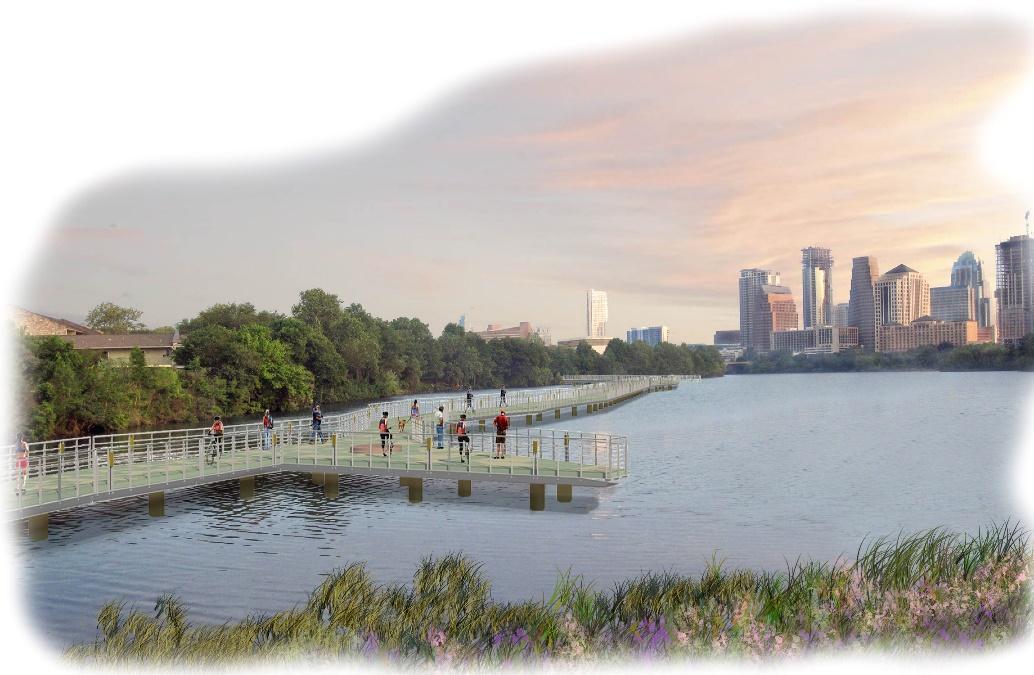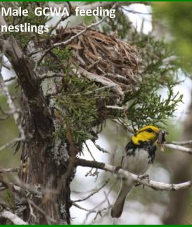Biological Resources
Our biologists frequently interact with Texas Parks and Wildlife, U.S Fish and Wildlife Service, Texas Department of Transportation, Texas Water Development Board, and other governmental agencies, as needed.
Services Provided
- Environmental Permitting and Permitting Strategies-Local, State and Federal
- Geological Assessments/Groundwater Studies
- Habitat Conservation Plan Participation Applications
- Karst Assessments
- NEPA Documentation
- Site Development Permitting
- Threatened and Endangered Species/Habitat Assessments
- Tree Surveys
- USACE Section 404 Permitting
- Wetlands Assessments
Project Profiles
Hornsby Bend Biosolids Management Plant – Tree Management Plan
Hornsby Bend Biosolids Management Plant (HBBMP) received a Notice of Violation (NOV) after a Compliance Evaluation investigation by the Texas Commission on Environmental Quality (TCEQ) on March 16, 2015. The violation stated that HBBMP failed to adequately prevent the proliferation of trees on the berms of three drying ponds. Baer Engineering provided the following services:
- Creation of a Tree Removal Plan
- Woody Plant Management Plan
Baer Engineering provided Environmental Consulting Services necessary to resolve the Notice of Violation, including the creation of a tree removal plan for identified dead and diseased trees, which included specific written instructions on how to remove the trees. The tree removal plan focused on removing the tree stem and significant roots while minimizing damage to the drying pond berms.
Baer Engineering prepared a woody plant management plan, which included a general list of maintenance procedures, activities, and schedules to help prevent trees from becoming established on the embankments. Ideally, removal of trees and vegetation would occur during the months of September through February to avoid disturbance of migratory birds and their nests. However, trees at Hornsby Bend needed to be removed during the breeding season to meet TCEQ’s compliance due date. Because of this, Baer Engineering also drafted a Migratory Bird Treaty Act compliance document for Hornsby staff. To create this document, a Baer Engineering wildlife biologist visited the site and conducted a nest searching effort. Due to concern at Hornsby that birds were nesting on the ground at ponds, Baer Engineering used a rope dragging technique to flush laying, incubating, or brooding adult birds off existing nests.
San Antonio Water Systems (SAWS) Brackish Groundwater Production Wells
SAWS secured financial assistance from the Texas Water Development Board to develop brackish groundwater resources in Bexar County to provide additional potable water to the City of San Antonio.
Potential habitats for the Texas Horned Lizard (Phrynosoma cornutum), Elmendorf’s Onion (Allium elmendorfii), and Sandhill Woolywhite (Hymenopappus carrizoanus) were identified during a field visit.
Baer Engineering oversaw the production of the Texas Water Development Board NEPA Environmental Assessment for this project. We were responsible for performing the final review of Environmental Assessment documentation and certifying that the objectives outlined in the Texas Administrative Code Rules were satisfied.
To satisfy Texas Parks and Wildlife Department requirements, Baer Engineering assisted in with presence/absence surveys for these three species of concern. We assisted in creating a guidance document to help construction workers avoid impact to rare biological resources during construction and provided staff for biological resources monitoring during construction.



David Moore Drive Low Water Crossing – Threatened and Endangered Species Habitat Assessment
The City of Austin required removal of the existing low water crossing at David Moore Drive in south Austin, Texas. The project also consisted of the construction of a C-Span bridge and concrete culvert boxes to replace the existing low water crossing.
Baer Engineering performed a U.S. Army Corps of Engineers Jurisdictional Determination within the project limits to document on-site Waters of the United States (WOUS), including wetlands, as defined by Section 404 of the Clean Water Act. Overall impacts to WOUS were minimized by design.
Baer Engineering provided state regulatory agency coordination for biological resources. Ms. Delgado conducted a threatened and endangered species (TES) habitat assessment of the project area and sent the results to the Texas Parks and Wildlife Department (TPWD). TPWD concurred with Baer Engineering’s assessment that no TES would be negatively impacted by the
project. Baer Engineering conducted and authored an Environmental Assessment of the project limits according to the City of Austin’s Land Development Code Section 25-8-12.

Boardwalk Trail at Lady Bird Lake
The Boardwalk Trail is a 7,000 linear-feet boardwalk along the south shore of Lady Bird Lake. Baer Engineering was the state and federal permitting agent for this iconic project. Baer Engineering performed field reconnaissance, which included a comprehensive vegetation study, a threatened and endangered species habitat survey, and wetlands delineations.
Fieldwork resulted in the identification of a rare plant, the Correll’s False Dragonhead (Physostegiacorrellii). Baer Engineering participated in stakeholder meetings to discuss plans to protect this rare plant. Baer Engineering prepared the draft and final documents to facilitate project clearance from U.S. Fish and Wildlife Service and Texas Parks and Wildlife Department for federal and state-listed threatened and endangered species, U.S. Army Corps of Engineers for Nationwide Permit 27, Texas Historical Commission for protected cultural resources, and Texas Commission on Environmental Quality for water quality.
Golden-cheeked Warblers Black-Capped Vireo Presence/Absence Surveys on Eight City of Austin Water Quality Protection Lands Properties
Baer Engineering and Environmental Consulting, Inc. was contracted by the City of Austin to conduct presence/absence surveys for Golden-cheeked warblers (GCWA) (Setophaga chrysoparia) and Black-capped vireos (Vireo atricapilla). Baer Engineering conducted surveys on ten Water Quality Protection Land properties in Hays and Travis County March through May in 2010. The mission of the Water Quality Protection Land program is to acquire land in the Barton Springs contributing and recharge zones. The City desires to manage the Water Quality Protection Land to produce clean high-quality water and help recharge the Barton Springs segment of the Edwards Aquifer. Management activities to improve water quality and supply include mechanical brush removal, prescribed burning, and native grass seeding. These activities could conflict with the protection afforded to these endangered species under the Endangered Species Act of 1973, as amended.
SERVICES PROVIDED
Baer Engineering followed established U.S. Fish and Wildlife Service protocols to determine the presence or absence of these species on approximately 6,923 acres. Following this protocol is required, as stated on our Federal and State Permits. Methods for this protocol are described in the Executive Summary of the RFQ.
Surveys were conducted on portions of the properties that contained the vegetation structure and composition which may be occupied by GCWA and BCVI, totaling 2,300 acres. We spent 630 hours surveying and recorded 480 GCWA and 3 BCVI locations using handheld GPS units. We estimated 24 breeding territorial males using modified spot-mapping techniques. We created maps depicting individual occurrences, movements, and territory boundaries using minimum convex polygons in ARCGIS. In addition, we created vegetation assessment maps that included photographs of representative suitable habitat for both species. We also included habitat management recommendations to the City of Austin for these two endangered species.
During our surveys we cataloged over 100 bird and 275 plant species. Baer Engineering personnel identified Golden-cheeked warblers by sight and sound. We wrote a final report describing the occurrence of individuals detected and summarizing the changes in GCWA detections on the properties surveyed for the City of Austin, U.S. Fish and Wildlife Service, and Texas Parks and Wildlife Department.

Habitat Conservation Plan Participation and Wildlife Habitat Assessment
Baer Engineering provided regulatory and permitting coordination for a project involving design of small diameter wastewater lines. The project areas were located within the Edwards Aquifer Recharge Zone in northwest Austin, in Travis and Williamson County. Baer Engineering conducted preliminary research by reviewing multiple regulatory databases for known environmental constraints near the sites. Information obtained was used to create an environmental constraints map and a report of the data. Regulatory Agency Coordination then began with the following agencies:
- Williamson County Conservation Foundation – We completed the Williamson County HCP participation application;
- Balcones Canyonlands Conservation Program – We completed the Habitat Assessment Participation application;
- City of Austin – We completed an Environmental Assessment following the City’s Land Development Code;
- Texas Parks and Wildlife Department – We completed the Wildlife Habitat Assessment Program Review Request application;
- Texas Commission on Environmental Quality – We completed the Organized Sewage Collection System application; and
- Texas Historical Commission – We completed the Request for SHPO Consultation application.
Project clearance was obtained from the above-listed agencies.
